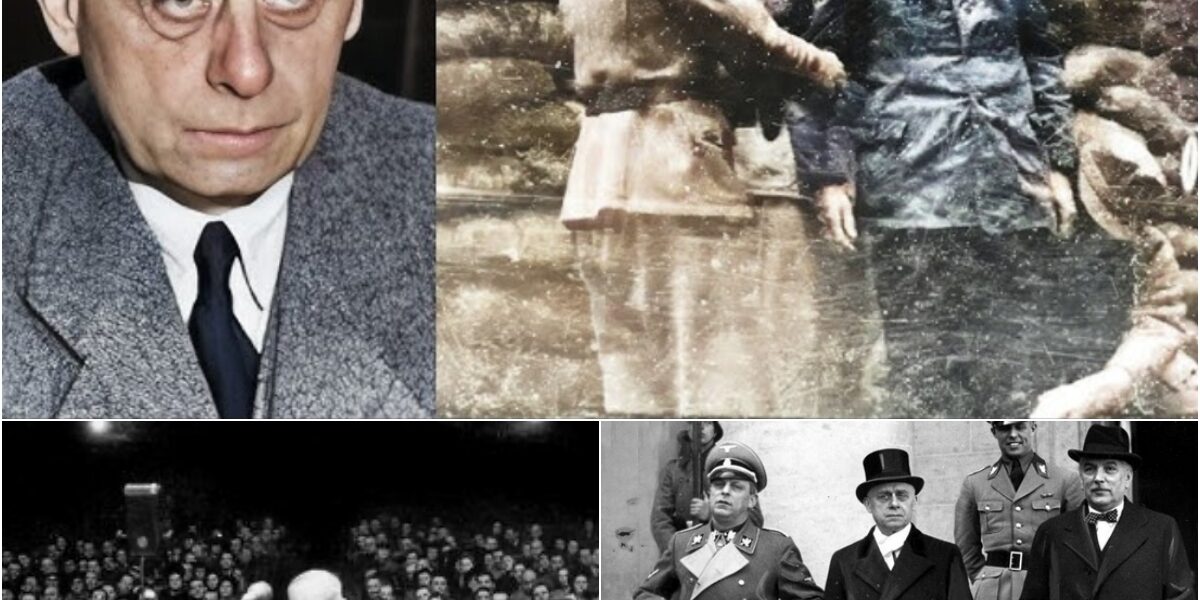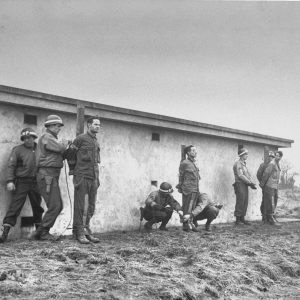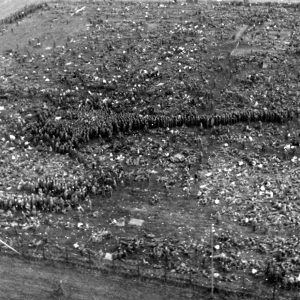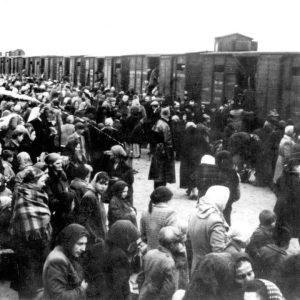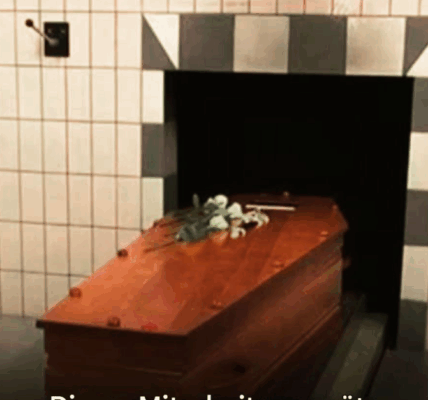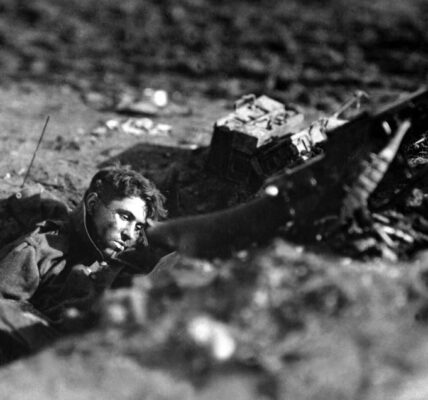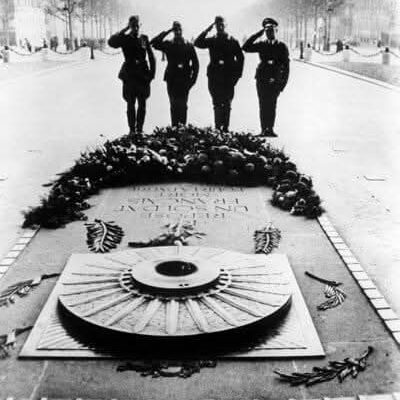330,000 SOUVENIRS IN FRONT OF, THE HUNGARIAN NAZI MINISTER-PRESIDENT GUILTYLY LOWENED HIS HEAD: The death of Döme Sztójay – The architect of the fastest and most brutal genocide campaign in the history of the Holocaust _de114
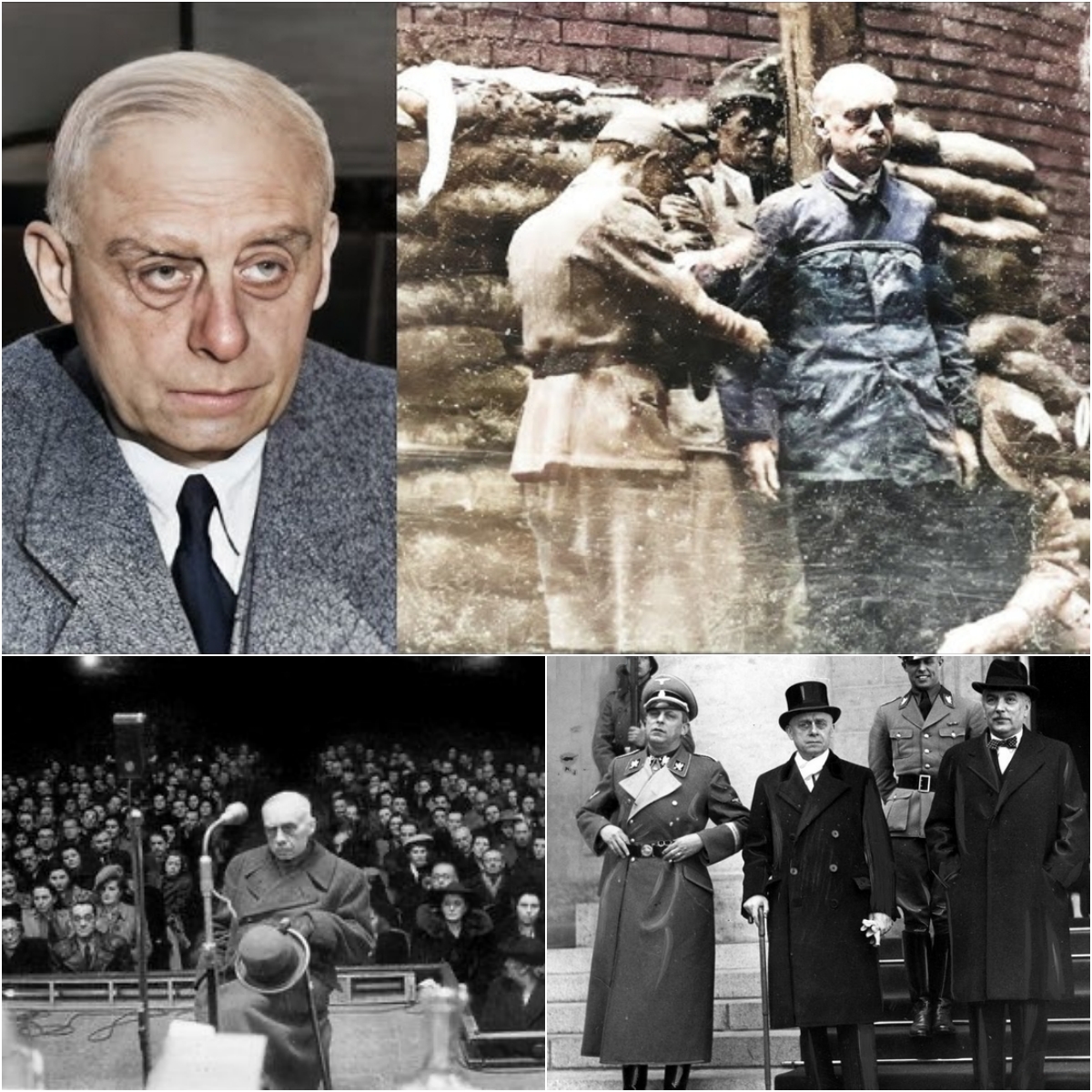
CONTENT WARNING: This article deals with the Holocaust in Hungary and the execution of a war criminal after the war. Purpose: exclusively historical education and remembrance.
Budapest, August 22, 1946 – Execution of Döme Sztójay – the Prime Minister who deported 440,000 Hungarian Jews to Auschwitz.
In just four months and one week of his rule (22 March – 29 August 1944), Döme Sztójay turned Hungary into one of the most efficient killing machines of the Final Solution.
From German-friendly ambassador to puppet prime minister
Born Dimitrije Stojaković in 1883, Sztójay served in the Austro-Hungarian army and was Hungarian ambassador to Berlin from 1935 to 1944, where he forged close ties with Ribbentrop, Himmler and Eichmann.
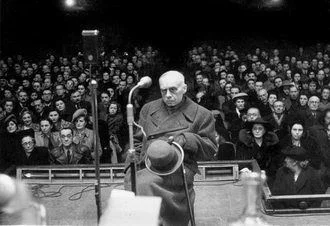
On March 19, 1944, Germany occupied Hungary (Operation Margarethe).
Hitler demanded a prime minister who would obey unconditionally.
Sztójay volunteered.
Within a few days:
Legalization of the fascist Arrow Cross movement
He enacted the strictest anti-Jewish laws in Europe at that time.
Full authority was transferred to the Hungarian gendarmes and Adolf Eichmann’s SS command.
The deadly summer of 1944
Between May 15 and July 8, 1944, over 440,000 Hungarian Jews were forced onto cattle cars in just 54 days , averaging 12,000 to 14,000 per day.
Most were deported directly to Auschwitz-Birkenau.
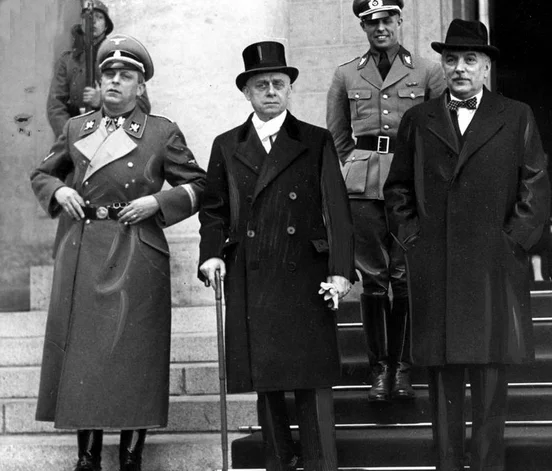
Approximately 330,000 were murdered immediately upon arrival – one of the fastest deportation and extermination operations in the history of the Holocaust.
Despite appeals from Horthy, the Vatican, Sweden and Switzerland, Sztójay remained adamant:
“It must be completed before the Allies land.”
Post-war justice
After the fall of the Arrow Cross regime, Sztójay was arrested by Allied forces in Germany and extradited to Budapest.
The Budapest People’s Court tried him from March to August 1946.
The testimonies of the survivors and the German-Hungarian documents were overwhelming.
On August 21, 1946, he was sentenced to death for war crimes and crimes against humanity .
On the morning of August 22, 1946, Döme Sztójay was executed by firing squad at the shooting range on Markó Street in Budapest.

His death could not bring back the 440,000 people who boarded the trains in the summer of 1944.
But it was a sign that those who use state power to order genocide—whether ambassadors or prime ministers—will ultimately be held accountable.
Today, on the banks of the Danube in Budapest, the memorial “Shoes on the Danube Bank” – sixty pairs of iron shoes pointing towards the river – commemorates both those who were shot into the water under the Sztójay government and those who were loaded onto trains.
We remember his name not to curse, but to remind the world:
If those in power choose evil, an entire nation can be destroyed within a few months.
